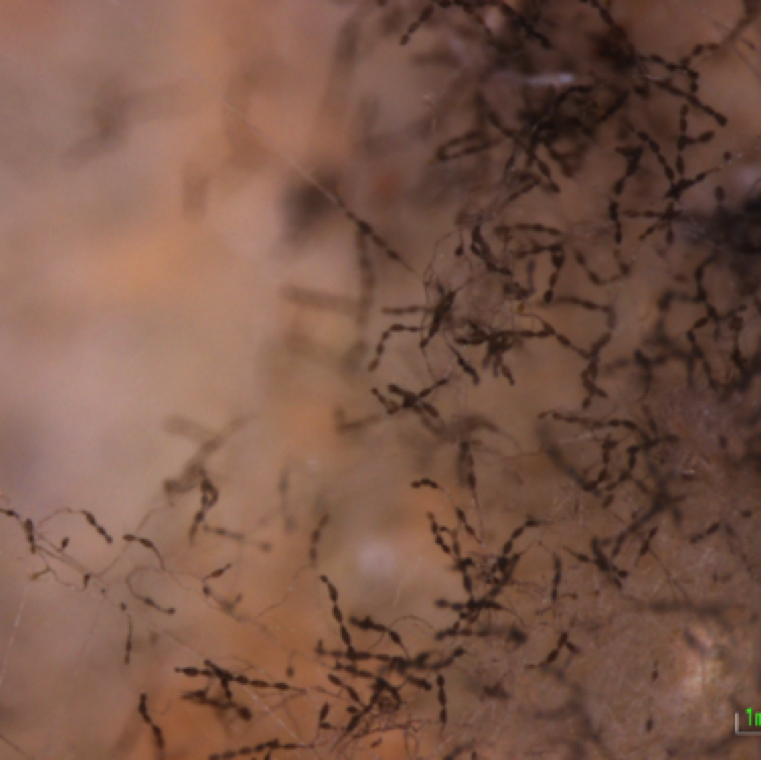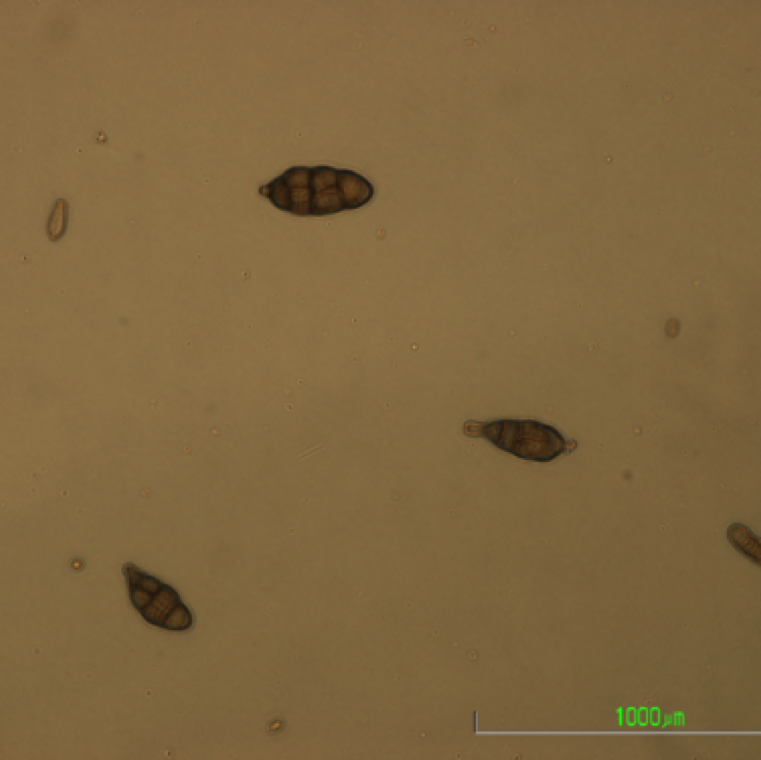

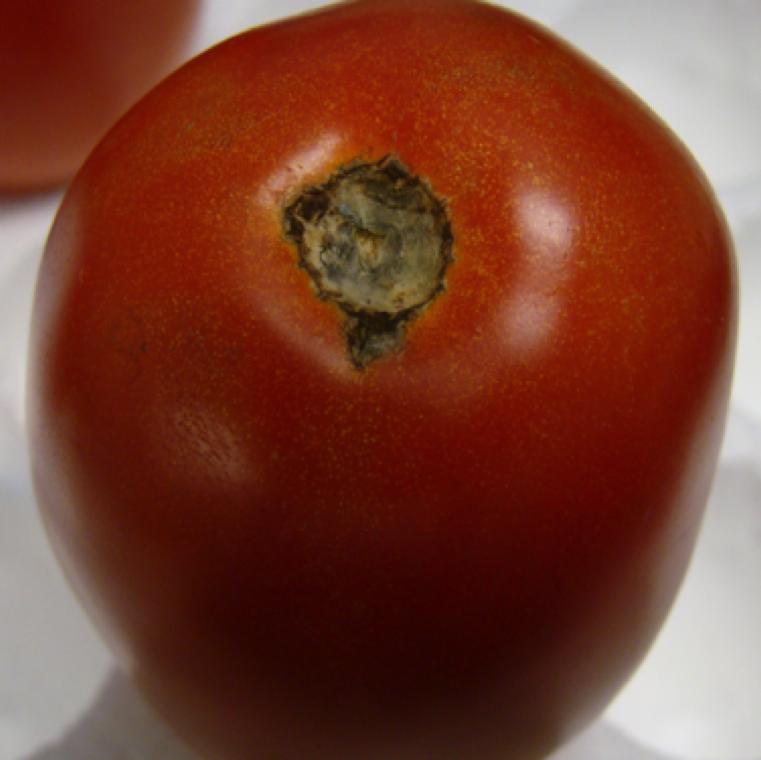
Black mold fruit symptoms include small black v-shaped lesion at the shoulder of ripe fruits (black shoulder). Lesions can also be seen on the fruit and are dark flecks with concentric ring pattern.
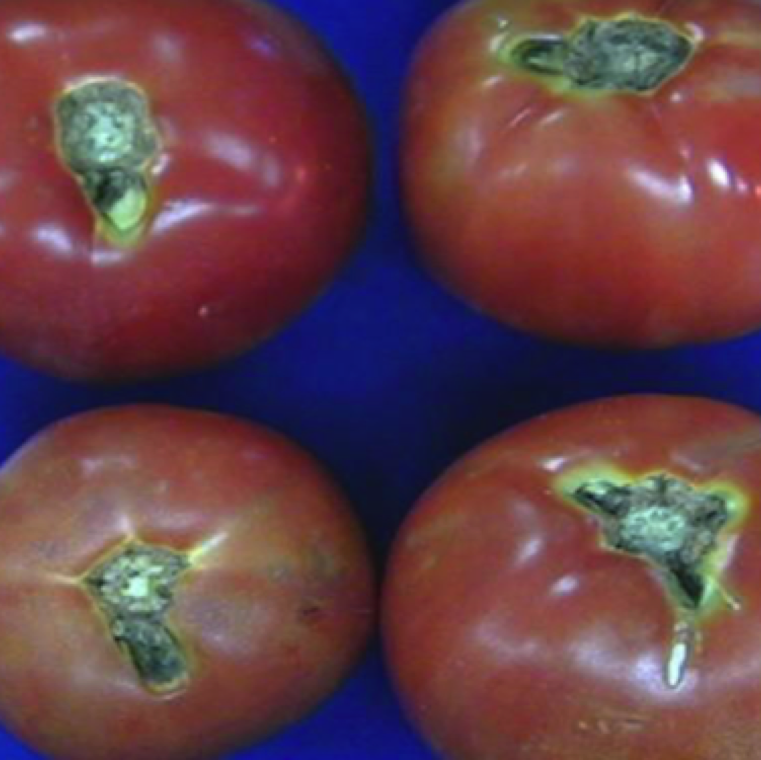
Dark lesions at the shoulder of the ripe fruit. Fruit lesions can seen in the field or develops during transit to shipment location, and can thus can cause post-harvest rotting.
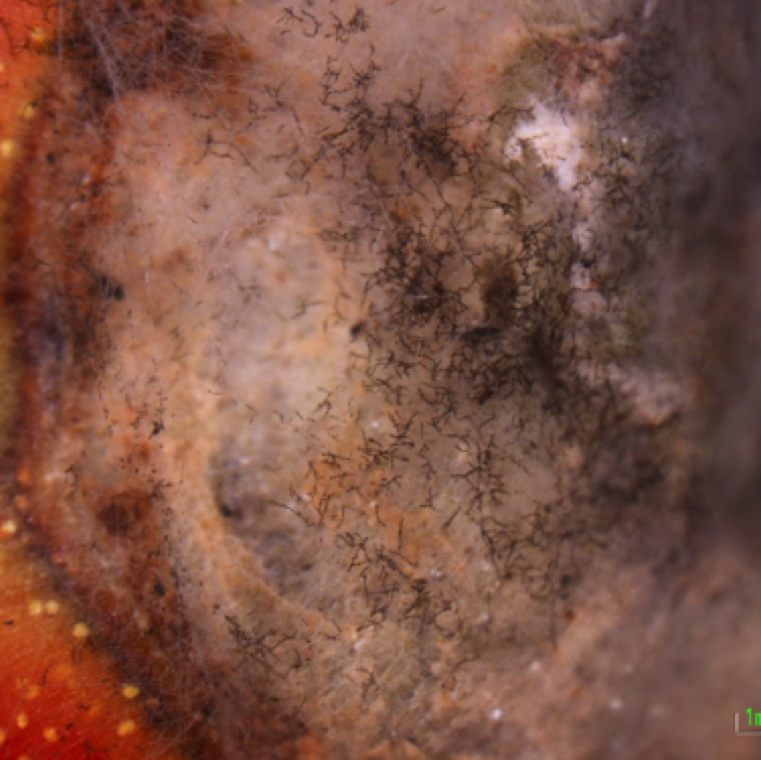
Fungal sporulation from an infected fruit. The pathogens can survive in soil for long period of time as a saprophyte and can infect plants through wounds on the stem.
Fungal causal agent: Alternaria alternata
BLACK MOLD
Tomato diseases
